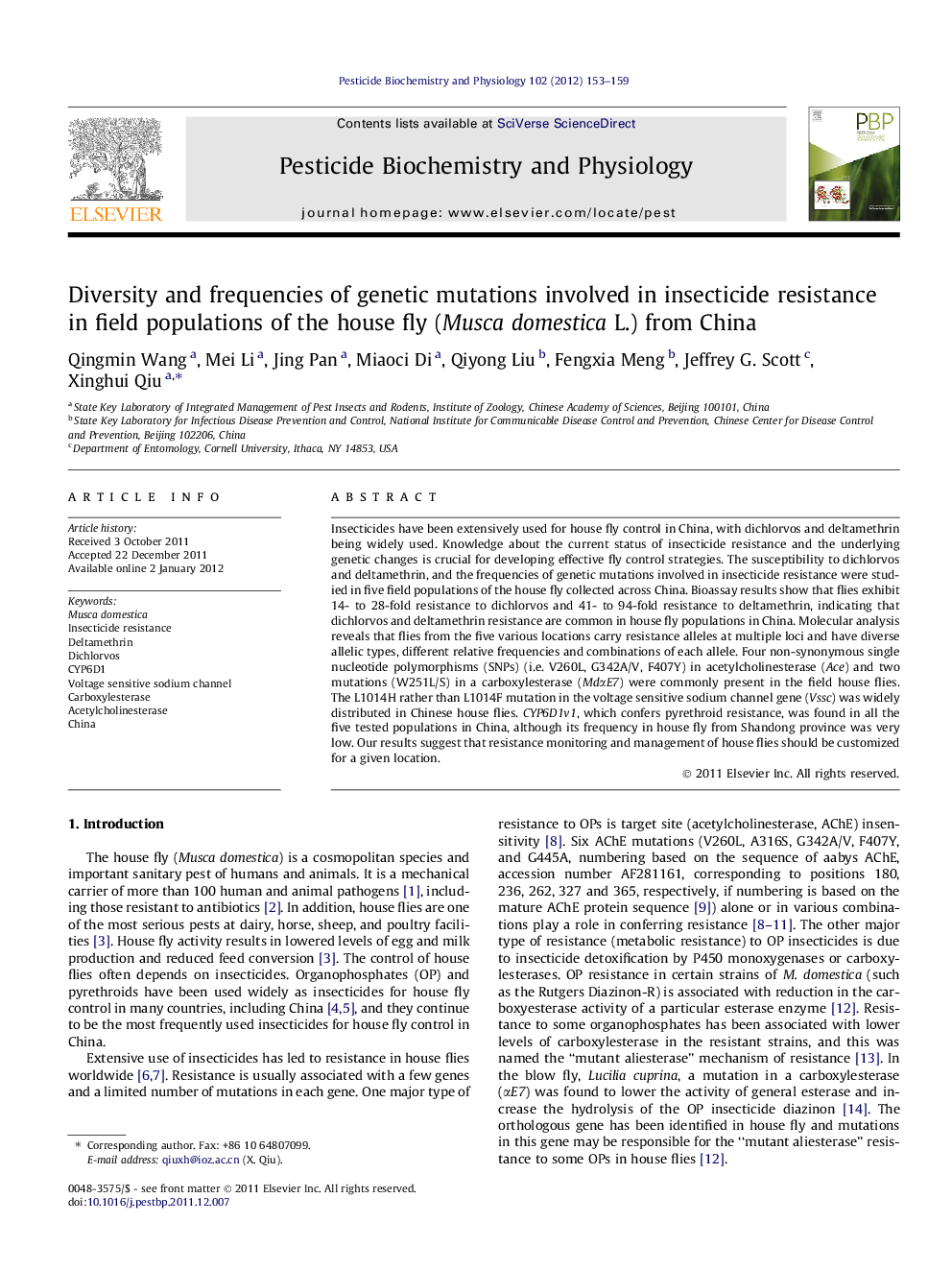| Article ID | Journal | Published Year | Pages | File Type |
|---|---|---|---|---|
| 2009736 | Pesticide Biochemistry and Physiology | 2012 | 7 Pages |
Insecticides have been extensively used for house fly control in China, with dichlorvos and deltamethrin being widely used. Knowledge about the current status of insecticide resistance and the underlying genetic changes is crucial for developing effective fly control strategies. The susceptibility to dichlorvos and deltamethrin, and the frequencies of genetic mutations involved in insecticide resistance were studied in five field populations of the house fly collected across China. Bioassay results show that flies exhibit 14- to 28-fold resistance to dichlorvos and 41- to 94-fold resistance to deltamethrin, indicating that dichlorvos and deltamethrin resistance are common in house fly populations in China. Molecular analysis reveals that flies from the five various locations carry resistance alleles at multiple loci and have diverse allelic types, different relative frequencies and combinations of each allele. Four non-synonymous single nucleotide polymorphisms (SNPs) (i.e. V260L, G342A/V, F407Y) in acetylcholinesterase (Ace) and two mutations (W251L/S) in a carboxylesterase (MdαE7) were commonly present in the field house flies. The L1014H rather than L1014F mutation in the voltage sensitive sodium channel gene (Vssc) was widely distributed in Chinese house flies. CYP6D1v1, which confers pyrethroid resistance, was found in all the five tested populations in China, although its frequency in house fly from Shandong province was very low. Our results suggest that resistance monitoring and management of house flies should be customized for a given location.
Graphical abstractFigure optionsDownload full-size imageDownload as PowerPoint slideHighlights► Dichlorvos and deltamethrin resistance are common in Chinese house fly populations. ► V260L, G342A/V and F407Y mutations in Ace gene were detected. ► W251L/S mutations in MdαE7 gene were commonly present in the field house flies. ► L1014H rather than L1014F mutation in Vssc gene was widely distributed. ► CYP6D1v1 was found in all the five tested house fly populations in China.
